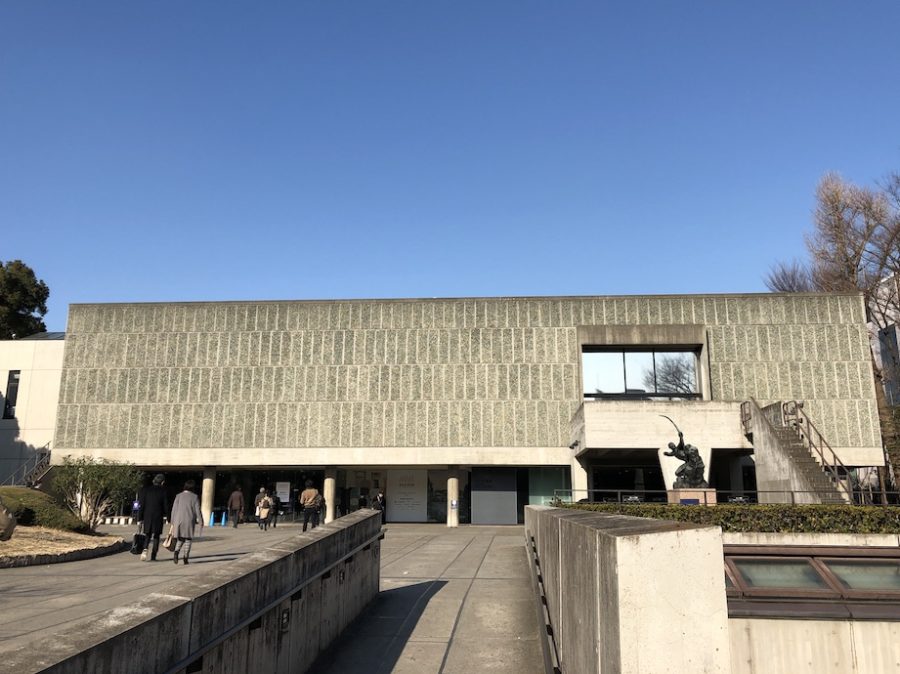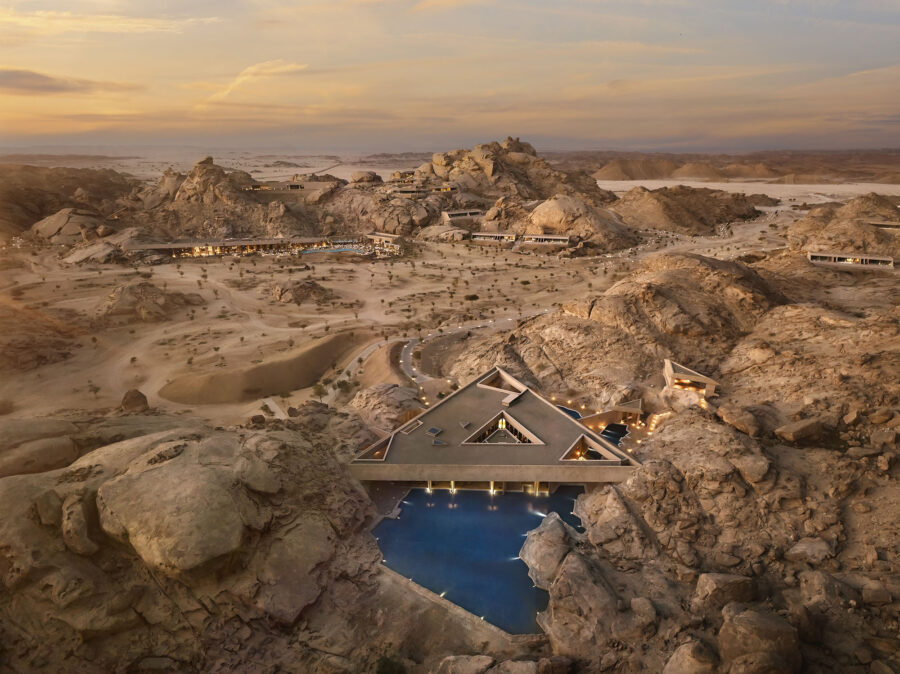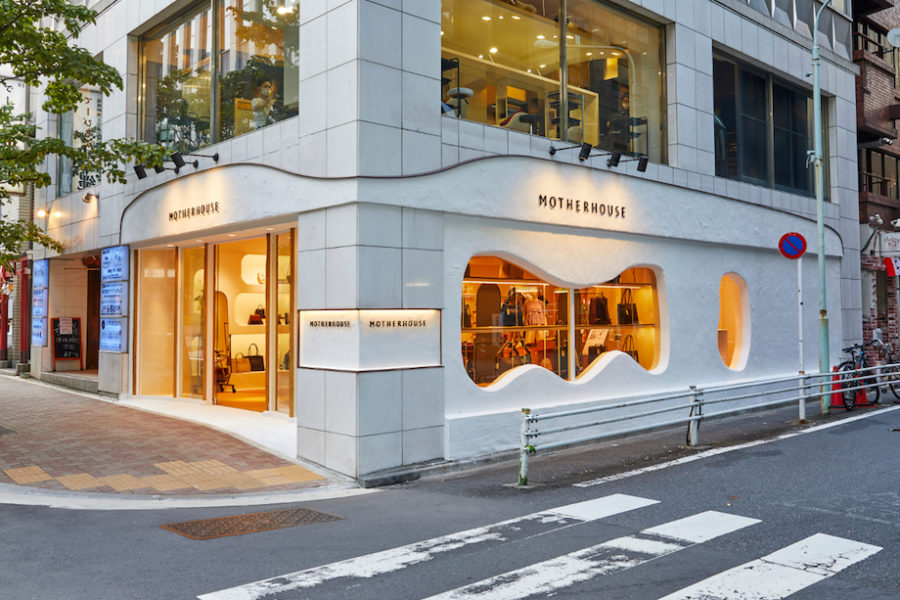
CULTURE


© Petr Polák

© Petr Polák
〈オートマティック・ミルズ 穀物サイロのコンバージョン(Automatic Mills Grain Silo Conversion)〉は、20世紀におけるチェコの近代建築を牽引した建築家ヨセフ・ゴチャール(Josef Gočár)が設計した、国定文化財に指定されている建築を改修した公共施設です。
講演会やイベントが開催可能なホールや、屋上にはまちを眺められるバーが設けられ、閉鎖されていたサイロの下の空間を公共スペースとすることで、100年以上の歴史をもつ工場を地域に開放しています。
プラハを拠点に活動する建築事務所 Prokš Přikryl architektiが設計しました。
(以下、Prokš Přikryl architektiから提供されたプレスキットのテキストの抄訳)

© Petr Polák

© Petr Polák
チェコの近代建築を現代に適合するコンバージョン
チェコの国定文化財に指定されている〈オートマティック・ミルズ(Automatic Mills)〉は、チェコ・スロバキア共和国における近代建築の創始者の1人である建築家ヨセフ・ゴチャールが設計した初期の建物の1つである。
産業都市パルドゥビツェの中心部を流れる川のほとりに建つこの記念碑的な工場は、1909年に建てられ、1924年には、私たちが今回コンバージョンした穀物サイロを含む複合施設へと拡張された。

© Petr Polák

© Petr Polák
この自動製粉所は、2013年まで100年以上継続的に稼働していた。2016年以降、オートマティック・ミルズ財団のイニシアチブにより、この利用されなくなった産業施設は文化的・社会的な地区へと生まれ変わろうとしている。
この敷地は、地域や市のためのギャラリー、学校のための工房、インフォメーションセンター、サイロといったいくつかの建物と施設がレンガの舗装でつながっており、それらの間に存在する独特の緊張感によって等しく結ばれている。

© Petr Polák
建設から1世紀を経たサイロのコンバージョンの主な目的は、以前の産業機能に取って代わる社会的利用である。
多目的な上部ホールでは、劇場、講演会、コンサート、社交イベントが催され、バーのある屋上テラスからは、まちの新しい眺めを楽しむことができる。新たに利用可能となった穀物貯蔵庫では展示会を開催することができ、サイロの1階部分は屋根付きの公共スペースとなる。地下には公衆トイレがあり、新たな広場全体の設備となっている。

© Petr Polák
この建物は、Prokop and Sons社によるミル施設、建設技師ポラート(Pollert)によるスケルトン、建築家ヨセフ・ゴチャールによる外殻の3つの部分からなる、まさにビルディングマシンである。
20世紀チェコで最も偉大な建築家となったヨセフ・ゴチャールの貢献により、工場は当初から純粋な工業建築として認識されてはおらず、まるで要塞の中に隠された機械のような神秘性を醸し出している。1924年に増設された穀物サイロでさえ、それ自体をはっきりとは把握することはできない。

© Petr Polák
建物を地域に開放しつつオリジナルのモニュメント性を維持するリノベーション
メインエントランスについて検討を行った結果、1階の両サイドを開放し、貯蔵庫の下に自由にアクセスできるパブリックスペースをつくることとした。
1世紀以上の時を経て建物を広場に開放するというアイデアは、敷地全体をまちに開放することにもつながる。また、閉ざされていた大きな開口部を再び設けることで、レンガの舗装でつながる場所に新たな開放感を導入する。

© Petr Polák

© Petr Polák
現在も以前と同様に、1つの吹き抜けが建物全体をつないでいる。
主な変更点としては、5階の旧機械室に挿入されたホールであり、この空間はエリア全体を見下ろす特別な位置にある。ホールとともに建物の屋上も開放されており、車椅子での利用も可能となっている。
サイロとその設備は、垂直性と垂直移動の感覚を特徴としている。地上階とホールに設けられたガラスとコンクリートの床は、地下を含むすべての階への光の通り道となっている。また、2階にある穀物庫の内部も新たに開放されている。

© Petr Polák

© Petr Polák
全体を通して、内装への介入は抑制されている。色味のある素材やレンガの使用はファサードに限定されており、内部は淡い色調とし、古いものと対比させないという原則を守っている。
また、取り壊された間仕切り壁が残した痕跡やさまざまなドリル穴や傷跡を含め、オリジナルの表面はすべてそのままにされている。こうすることで、既存の建物が有する合理性とモニュメント性をより発展させている。

© Petr Polák

© Petr Polák

© Petr Polák
以下、Prokš Přikryl architektiのリリース(英文)です。
Automatic Mills Grain Silo Conversion
The Automatic Mills, a national cultural monument, is one of the first buildings designed by the architect Josef Gočár. Standing on the banks of the Chrudimka River in the centre of Pardubice, the monumental mill building was created in 1909 for the Winternitz brothers. In 1924, the complex was extended to include a grain silo, the conversion of which we designed. The automatic mills operated continuously for more than 100 years until 2013. Since 2016, the mill brownfield has been undergoing transformation into a cultural and social urban district, thanks to the initiative of the Automatic Mills Foundation.
This site is composed of several buildings and institutions (the regional Gočár Gallery, the city’s “Gampa” Gallery, the “Sphere” central workshops for schools, the Infocentre and the Silo), linked by a brick carpet and equally by the unique tension existing between them. Each of the architects has grasped their building in a different way. All the buildings reinforce each other and thus form a living part of the city. The exceptional architects Zdeněk Balík, Jan Šépka, Petr Všetečka and investor Lukáš Smetana have contributed to the whole.
The main purpose of the Silo conversion is its social use, which one century after its construction has replaced the previous industrial function. The multi-purpose upper hall hosts theatres, lectures, concerts and social events. The roof terrace with bar offers a new view of the city. Exhibitions will be held in the newly accessible grain bins, and the silo ground floor now forms a covered public space. A basement with public toilets provides facilities for the entire new square.
A true building-machine, it originally contained three basic parts: the milling technology (Prokop and Sons), the skeleton framework (the work of the builder Pollert) and the outer shell (architect Josef Gočár). Thanks to Josef Gočár, who was to become unquestionably the greatest Czech architect of the 20th century, the mills were from the outset never perceived as purely an industrial building. Instead, they create the mystery of a machine hidden in a fortress. Even the grain silo, added to the mill in 1924, is itself not clearly graspable.
Considerations about the main entrance led to the decision to uncover the secret: activating the ground floor on both sides and creating a freely accessible public space under the bins. The idea of opening the building to the square went hand in hand with the overall opening of the site to the city after more than a century. Opening the gates, opening the parterre. We also introduced a new openness to the brick plinth through reintroducing a large opening that had been mysteriously closed. The exposed grain bins give the indoor space its atmosphere. A connection is made at parterre level via the side between the mills and the silo, at the location of the original doors. On the other side, by contrast, the base is broken through by a significantly wide new opening.
Today, as in the past, a single communication core connects the whole building. The main change is the hall inserted into the former machine room on the 5th floor, granting the space a privileged position above the entire area. Together with the hall, the roof of the building has been made wheelchair accessible.
The silo and its technology are characterised by verticality and a sense of vertical movement. The glass-concrete floor panels in the ground level and the hall create a path for light through all floors to the basement. Excavated between massive columns, this basement serves for facilities. Almost an underworld of their own, the underground spaces could have been the result of the columns being founded deeper than our explorations had anticipated. Another newly accessible space is the inside areas of the grain bins on the second-floor level: here, the very essence of the silo becomes visible.
The interior modifications are restrained. Colours and brickworks are confined to the facades, the interior is muted, the range of materials is standard and adheres to the principle of additions not standing in contrast to the old. All original surfaces are retained, including the patinas, or various drill holes and scars left by the demolished partition walls.
Simply put, the aim is to develop the building in its rationality and monumentality.
Studio: Prokš Přikryl architekti
Author: Martin Prokš, Marek Přikryl
Website: www.proksprikryl.cz
Social media: www.instagram.com/proksprikrylClient: Automatic Mills Foundation – Lukáš Smetana, Mariana Smetanová
Project location: Automatické mlýny 1963, 530 03 Pardubice
Project country: Czech RepublicCompletion year: 2023
Built-up area: 357 m²
Gross floor area: 1848 m²
Usable floor area: 1131 m²Photographer: Petr Polák, petrpolakstudio.cz
Collaborator:
Civil engineer: Jan Kolář
Concrete structures: MDS Projekt
Steel structures: STA-CON
Fire safety: Projekty PO
Ventilation: Mikroklima
Plumbing: MK Profi
Electrics: Miroslav Bouček
Acoustics, A/V media: SONING
Lighting: Ladislav Tikovský [AST]
Measurement and regulation: TECONT
Lift: TRAMONTÁŽ
Geothermal boreholes: GEROTOP
Heating: Jiří Vik
Graphical system: Richard Wilde [publikum.design]
Main contractor: STAKO Hradec Králové
Prokš Přikryl architekti 公式サイト
http://www.proksprikryl.cz/index.html









